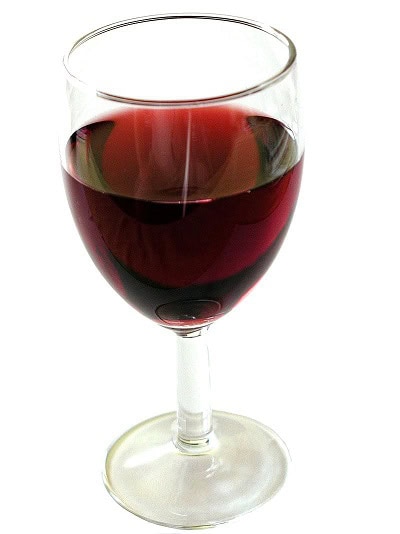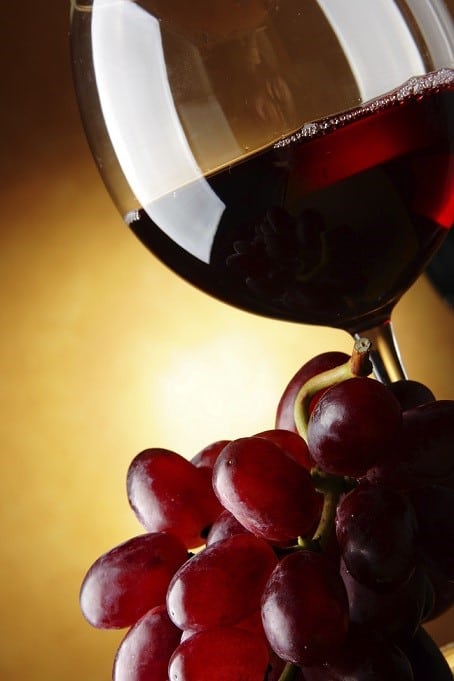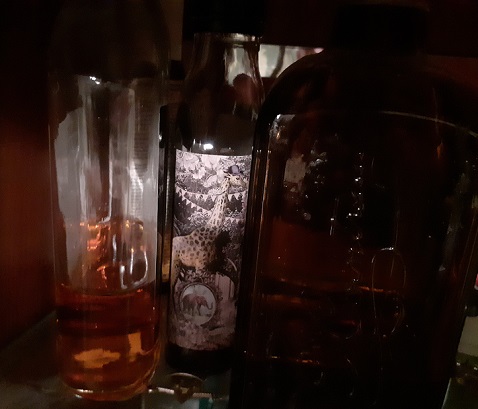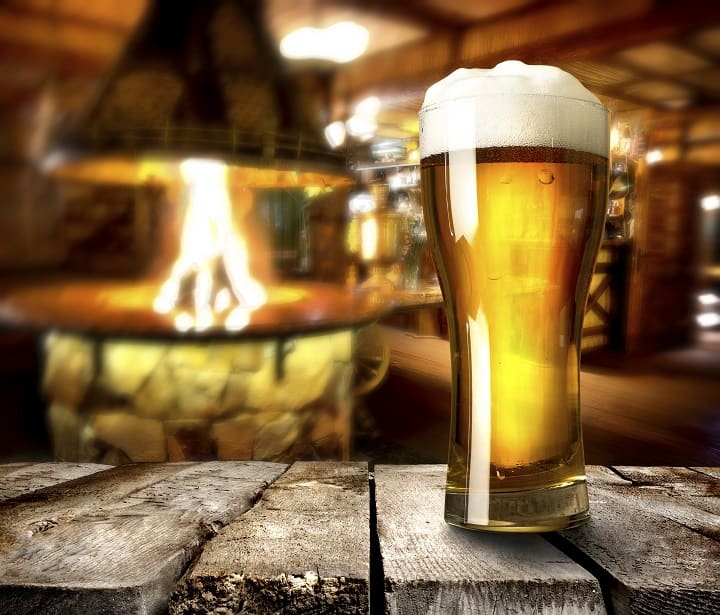 Alcohol is an indulgence which you can easily maintain in a skin-friendly diet with a few modifications. Some strategies are more secretive, like eating broccoli and cucumber (which enhance your detoxifying enzymes), while others are simple things which you can implement into your life then completely forget about, like swallowing a magnesium capsule each day.
Alcohol is an indulgence which you can easily maintain in a skin-friendly diet with a few modifications. Some strategies are more secretive, like eating broccoli and cucumber (which enhance your detoxifying enzymes), while others are simple things which you can implement into your life then completely forget about, like swallowing a magnesium capsule each day.
That said, alcohol is undoubtedly an acne risk if abused. It can turn your skin grimy, and rapidly coat it with fresh pimples. Alcohol’s biggest danger is draining every last drop of your glutathione reserves, as this important acne-clearing antioxidant is also used for removing the toxic acetaldehyde that alcohol generates.
Alcohol is infamous for shattering your vitamin C and vitamin E molecules, and can even trigger inflammation directly because of the toxic acetaldehyde respawning in every channel and every subregion of your bloodstream.
Those are the basic alcohol dangers which we’ve known about for years. But now, a new connection to acne has been discovered, one which you might have suspected all along…
Alcohol causes oily skin directly
The study was released very recently, in February 2024, and has officially advanced our quest to drink alcohol regularly but still have clear skin to the next level.
The study tested sebocytes, AKA the cells that swell with sebum and burst to release their contents all over the face, in what we call oil. These sebocytes were specifically from human beings, not dogs or crocodiles. Ethanol was applied to the sebocytes for 24 hours and 48 hours, in 5 different concentrations. This was also compared to a control substance, again for 24 and 48 hours. That resulted in 12 overall experiments, and each of these was repeated 28 times, giving the results high accuracy.
Our study simply used isolated alcohol, with no carbohydrates from barley or weird green grape compounds to confuse things. So it’s pretty important news for us and the global acne collective when the study found that ethanol massively simulated the production of sebum (oil).
The higher the concentration of ethanol, the greater the stimulating effect on the sebocyte cells. The longer time period of 48 hours also resulted in ever greater stimulation – there was no maxing out. For instance, a week long binge would definitely be worse than a couple of civilized glasses of red wine.
The control substance was arachidonic acid, and this itself is known to stimulate sebum production, but ethanol far outstripped it.
Ethanol was also compared to some fellow alcohols. Propanol, found in common rubbing alcohols, had a strong encouraging effect on oil production as well, but methanol, used in cleaning products and as a hospital antiseptic, had zero effect.
The difference with propanol was that it was far more cytotoxic to cells than ethanol – it began killing them at high dosages. Hence, sebum production fell sharply again with propanol when a certain threshold was reached, while with the ethanol which millions of us consume merrily each week, it kept increasing forever…
Alcohol’s secret greasy power
 This power is the hidden connection us acne-clearing enthusiasts have been looking for. That alcohol turns your face into a swimming pool of grease is fairly common knowledge, but until now, we’d assumed that the carbohydrate content of beer was to blame.
This power is the hidden connection us acne-clearing enthusiasts have been looking for. That alcohol turns your face into a swimming pool of grease is fairly common knowledge, but until now, we’d assumed that the carbohydrate content of beer was to blame.
Beer contains far more carbs than wine, as its sugar molecule chains are much more complex and harder for bacteria to ferment. Therefore, more gets left behind in the resulting beer as carbohydrates, while in wine, the relatively simple sugars are mostly converted to alcohol (explaining wine’s higher percentage of 12-14%).
The darkest, richest beers can contain 25 carbs, while a typical Heineken or Budweiser contains 11 carbs per 12 ounces. Drink many pints a night in an epic pub crawl where you wake up under a cow field hedge, and your skin will turn into an oil slick due to surging blood sugar and insulin.
That’s why we always assumed that oily skin happened, and the carbs are still a big factor, but because of this study, we now know that alcohol itself causes oily skin, independently of the composition of that alcoholic drink. It could be wine, pure vodka, a pirate ship bottle of rum, or aged barrel whisky from an old haunted mansion basement. The sebaceous glands lining your face become more active and pump out more oil after mere contact with alcohol.
Scientists isolate the cause
Next, the scientists vowed to delve deeper and find out what made ethanol tick. They discovered that two metabolites produced during the body’s detoxification of alcohol caused the increase. These were fatty acid ethyl esters, specifically two called ethyl oleate and ethyl palmitate.
To understand this, you must first understand how alcohol is detoxified by the body. Alcohol is broken down using various pathways which can sometimes interchange with each other when one is weakened. Your body takes no chances against such a toxic substance. The primary enzyme in the liver and all over the body is alcohol dehydrogenase (ADH), which breaks down ethanol molecules into acetaldehyde.
Second is enzymes in the P450 family, such as enzyme CYP2E1. These are most famous for metabolising caffeine – for example, genetic variations can affect the half life of caffeine and people’s sensitivity to coffee. But they also have a moderate role in alcohol metabolism. Then there’s the antioxidant catalase, which has a minor detoxification subrole, including for alcohol.
Between them, these three pathways digest the vast majority of the body’s alcohol. But a more minor pathway that happens whenever you drink alcohol is conversion into fatty acids, by an enzyme called fatty acid ethyl ester (FAEE) synthase. As a by-product, this produces the two ethyl esters mentioned above, which appear in various tissues around the body after drinking.
A power nobody knew about
 The scientists wanted to really isolated the cause, so they used a chemical that fully blocked the activity of alcohol dehydrogenase, the main detoxifying enzyme. There was no difference in the sharp oil increase. Clearly, ADH wasn’t involved.
The scientists wanted to really isolated the cause, so they used a chemical that fully blocked the activity of alcohol dehydrogenase, the main detoxifying enzyme. There was no difference in the sharp oil increase. Clearly, ADH wasn’t involved.
The scientists then blocked the enzyme that produces the fatty acid ethyl ethers, using a different chemical. This time, the surge in sebum was fully abolished. They had identified the villain.
The scientists kept going, and used a chemical to block the catalase antioxidant. This time, there was a large increase in the oil produced. Catalase wasn’t causing the problem, but removing it made the problem worse. There’s a logical explanation here, as catalase is especially abundant in skin tissues. It’s possible that the whole point of the ethyl ester pathway is to relieve other alcohol detoxifying pathways when they malfunction somehow, and in the skin, this might be particularly connected to catalase.
So if the catalase pathway was inactive, it would force the ethyl ester pathway to take over, and voila – your face is dripping with oil. Similarly, blocking p450 enzymes increased the oil production spike further.
Alcohol causes increases sebum production, and it does so through a relatively obscure pathway.
The connection becomes undeniable
But is this connected to actually drinking alcohol? After all, the study only tested isolated cells. All signs suggest that drinking beer or wine acts in the same way.
Before the modern breathalyser, the first invention wielded by police against drunk drivers was the drunkometer, invented in 1938. This machine was the size of a shoebox and had a balloon hidden inside, which suspects were ordered to blow a breath sample into. Also hidden in the drunkometer was an acidified potassium permangate solution in a petri dish. If the driver was guilty and had imbibed alcohol, then the solution would change colour. The higher the alcohol percentage of their breath, the greater the colour change.
There was a small problem though: becoming a licensed drunkometer operator required a 44 hour training course. The machine was cumbersome to carry around as well.
Things simplified greatly in 1954 with the invention of the breathalyser, which any police officer could place in a slurring driver’s mouth. Recently, there’s been a new development though – measuring the fatty acid ethyl esters discussed above.
In a 2001 study, scientists gathered 19 heavy alcoholics, 5 teetolers, 13 moderate drinkers, and 10 people who had actually died from alcohol abuse. They measured the levels of 4 different fatty acid ethyl esters in their hair, including the two found to increase oil production earlier (ethyl palmitate and ethyl oleate).
As you’d expect, the alcoholics’ hair had dramatically higher FAEEs than the teetolers’. This booze metabolite clearly accumulates all around the body, but the final quote sounded the death knell: “FAEEs are deposited in hair mainly from sebum“.
These compounds which are known to massively stimulate oil production are actually delivered by the oil itself. They’ve infiltrated the exact place they need to. They’re carried by the very substance they malicious scheme to increase beyond normal levels, to levels which are dire for acne.
This is the final link in the chain that confirms that isolated alcohol, regardless of the drink, can cause oily skin.
The implications for you
 Carbohydrates aren’t the only old theory about alcohol and oily skin. For years, the consensus in the acne underground was that alcohol dehydrates your body from the inside out. It doesn’t quite shrivel you up like an old piece of fruit, but the loss of moisture forces your body to pump out more oil to compensate, whether swallowed in beer or rubbed in topically. That’s the theory according to various blogs, forum posters and reddit comments, but this with fresh 2024 study, we have a way more specific mechanism.
Carbohydrates aren’t the only old theory about alcohol and oily skin. For years, the consensus in the acne underground was that alcohol dehydrates your body from the inside out. It doesn’t quite shrivel you up like an old piece of fruit, but the loss of moisture forces your body to pump out more oil to compensate, whether swallowed in beer or rubbed in topically. That’s the theory according to various blogs, forum posters and reddit comments, but this with fresh 2024 study, we have a way more specific mechanism.
If you’re still reading, then you’re probably hoping for a way to directly combat this so that you and beer can stay friends forever. Unlike alcohol’s other dangers though, the solution is far less clear.
With the glutathione depletion, you simply have to supply the ingredients of glutathione (magnesium, selenium, sulphur) so that your supplies are nicely replenished and can withstand any beer cans you chuck at it. With the vitamin C and vitamin E depletion, ensure that your supplements are in order.
But this oily skin phenomenon is trickier. At best, we can say to double down on oily skin strategies elsewhere, but what if the benefits from vitamin A don’t directly counteract alcohol? Vitamin A (and accutane) stimulates PPAR receptors to downregulate sebum production, whereas the fatty acid ethyl esters are totally different. Green tea blocks androgen receptors, preventing DHT from binding, which is completely different again.
The best bet could be vitamin B3, as according to a 2019 study, this has the miraculous power of downregulating sebum production regardless of the cause. B3 (AKA niacin) banished the oily skin caused by 3 separate triggers – arachidonic acid, testosterone and anandamide. There’s no other compound which is such an effective master lever.
The other thing is that oily skin is not guaranteed to cause acne, if the vitamin E and antioxidants like coenzyme Q and carotenoids within that oil are plentiful enough. Then there’s the dosage question. Being an alcoholic is far different to drinking a couple of glasses three nights per week, or being mostly sober but having a jolly binge drink once every two weeks.
Like with alcohol’s other dangers, keeping alcohol to fun dosages rather than life-destroying dosages will probably automatically work, even if we don’t have a specific way to counteract this oily skin danger (yet).
Does this apply to topical alcohol?
The answer may be yes, according to this 2003 study. It measured the formation of 4 fatty acid ethyl esters after applying hair care cosmetics to the skin, which all contained alcohol. Two were those tested in the oily skin study: ethyl oleate and ethyl palmitate.
According to the scientists, “it is assumed that FAEE are formed in the sebum glands also after regular topical application of products with a higher ethanol content“. The alcohol doesn’t need to be inside the body for the process to kick off.
The scientists’ whole purpose was to validate their new testing system for alcoholics. They were worried that cosmetic usage could throw their radars out of whack, when measuring the ethyl esters derived from alcohol in the diet. Indeed, a deodorant, a hair lotion containing 62.5% ethanol, and a hair spray all caused false positives.
The question is the quantities – it could be relatively minor, and pale in comparison to the FAEEs generated from gulping down booze. But it could be a risk for topical remedies I recommend here that contain alcohol, like witch hazel. I’d judge this to be a minor risk, but something to be aware of. Watch out for increased oily skin in any topical remedy containing alcohol.
Verdict – and random theories
This new oily skin power definitely isn’t a reason to swear off booze completely. Don’t get the impression that we’re lecturing you to never touch a drop again. I’m very sure that one day, we’ll be able to counteract these malicious fatty acid ethyl esters directly.
Until then, do it the old fashioned way: watch your skin in the mirror with your own eyes, and see whether it can withstand your chosen level of alcohol intake.
The other optimistic point is that this was such a random discovery. It’s such a specific mechanism, which somehow went undiscovered until 2024. Therefore, ponder the following question: what compounds could be lurking out there in nature which do the opposite? There must be random antioxidants, phytonutrients or even massively researched nutrients which downregulate sebum production, whether it’s the jaceidin found in spinach, the magniferin found in mangoes, or the naringenin in oranges.
The probability that such oily skin medicines are out there is 99%, but we haven’t identified them yet, so there’s only one solution: eat a wide variety of tasty fruits, vegetables, herbs and spices, and benefit without knowing.
Thanks for reading!

isn’t there a slight hormesis benefit to drinking beer regularly? If we are constantly eating super healthy all the time maybe our bodies will become more weak and prone to disease in the long term?
Definitely, I’m not actually recommending against drinking any alcohol at all in this article. This is simply part of our mission to gain as much knowledge on the causes as possible, including some of the grimy skin and tiny pimples people may notice from alcohol.
Is there a possible uric acid connection we should be worried about? Coffee, quercetin, chamomile and vitamin c are supposedly all meant to flush it out of our system, so that’s what I’m doing right now.
It can definitely pile on more of the inflammation behind acne. Consuming plenty of antioxidants and antioxidant-rich foods like the ones you mentioned should work. Might be worth a section of a new article.